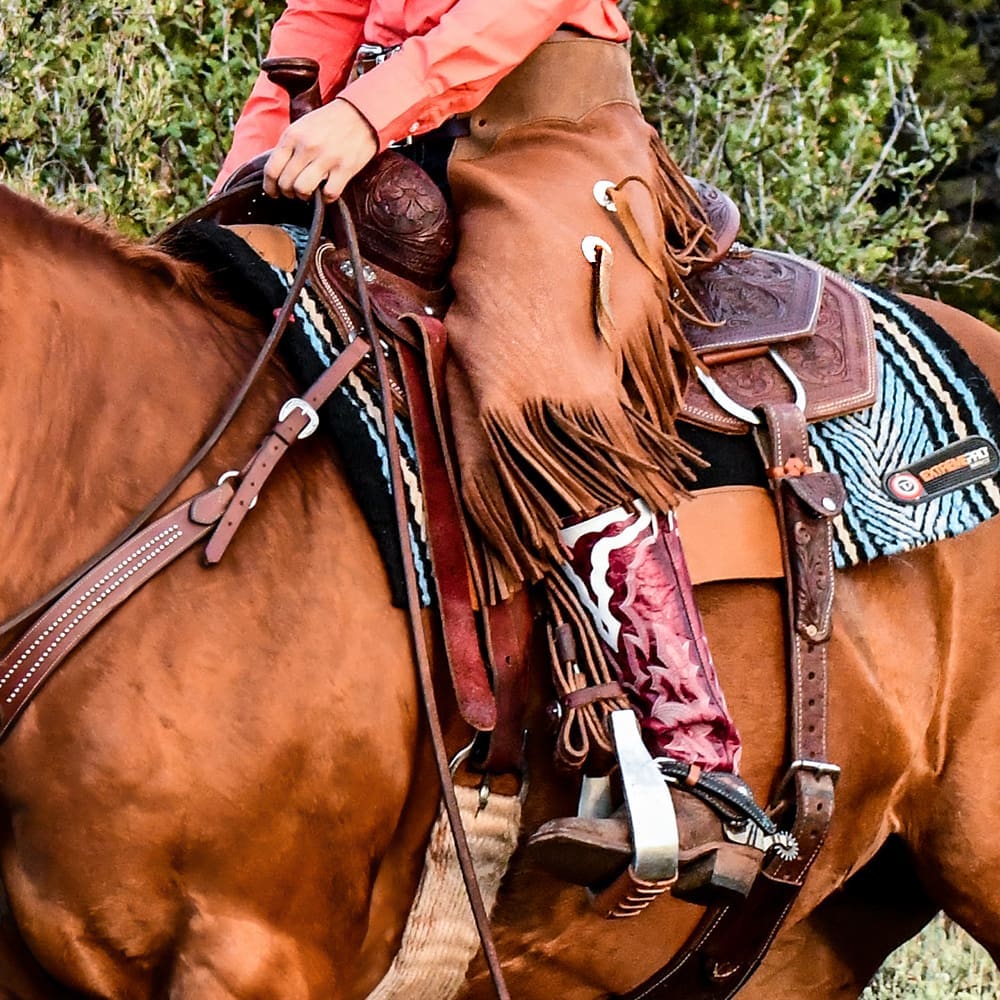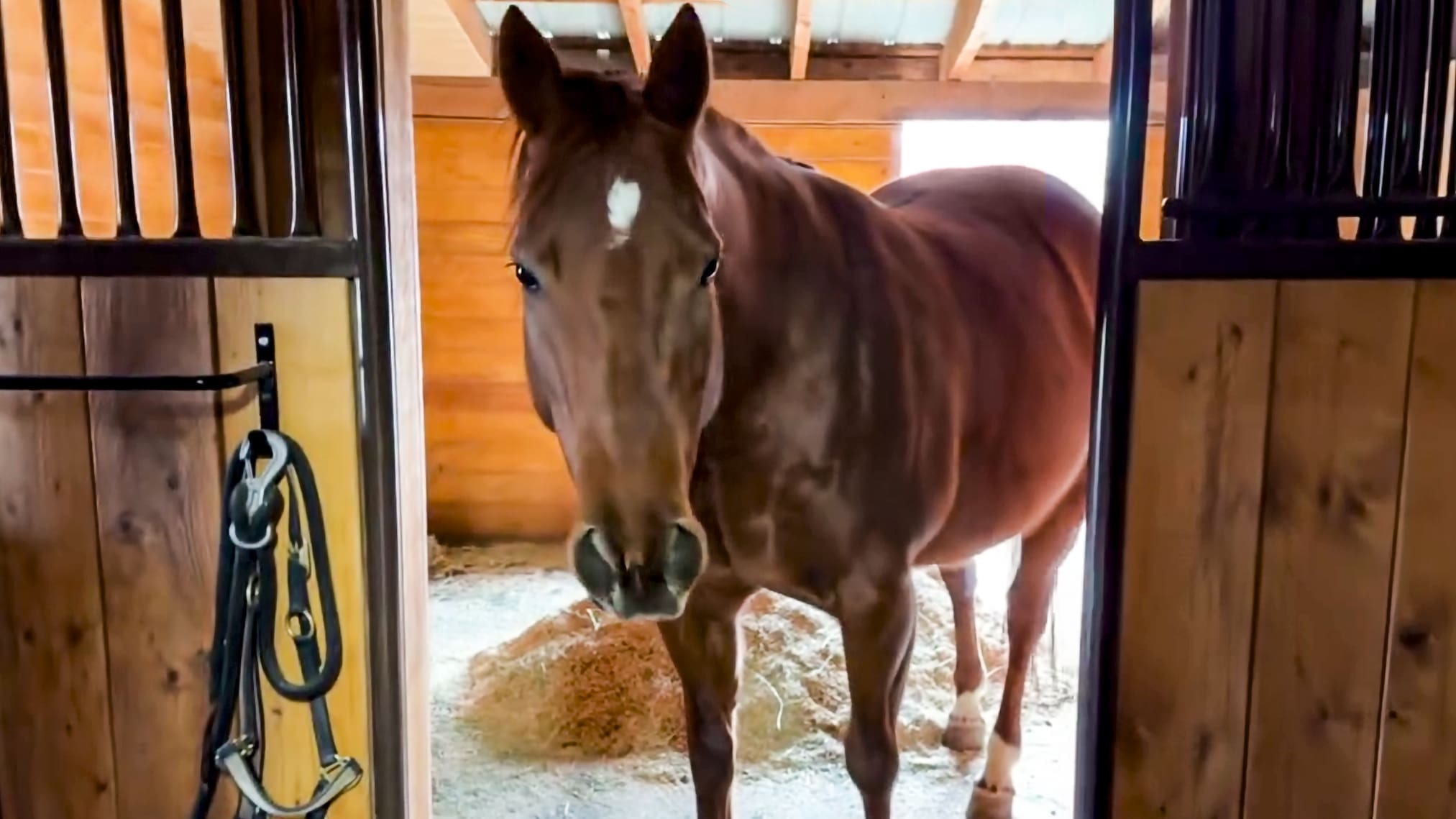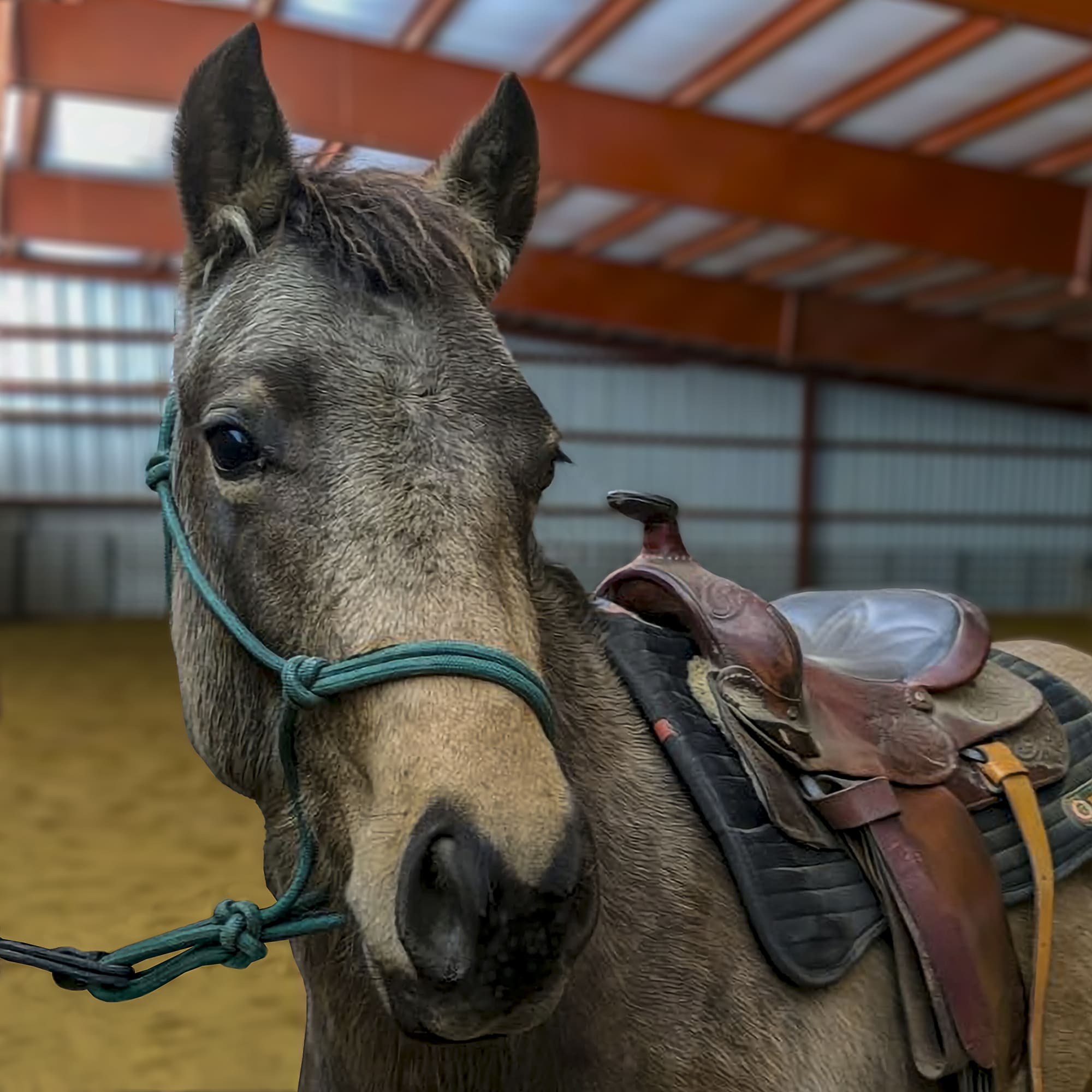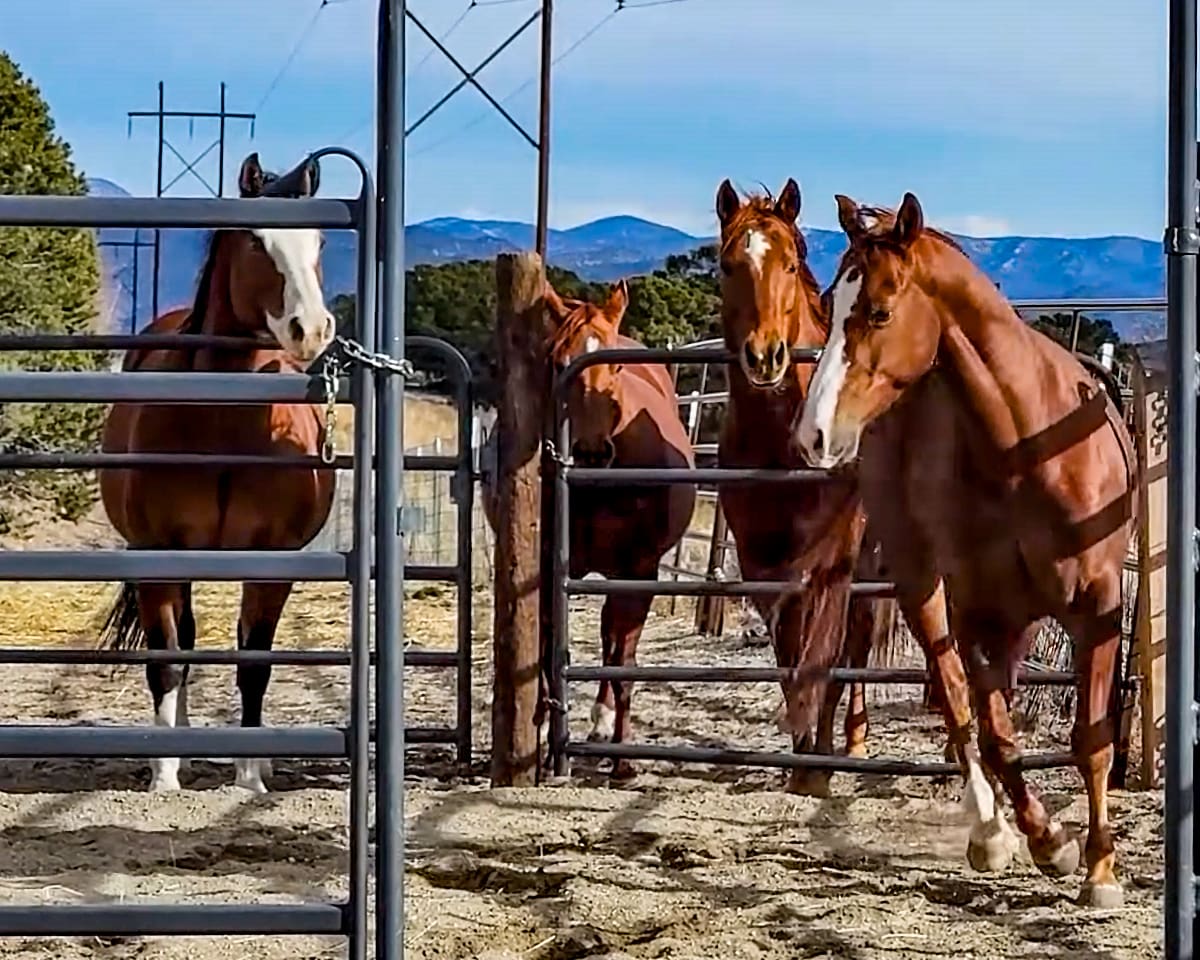
Proper position unites the balance of horse and rider, giving the picture of a team moving as one. If I were to guess at the single most common equitation error I see, what immediately springs to mind is the rider that is braced on the stirrup.
By learning to release the heel and take weight off the stirrup, gravity will help hold you close to your horse. And anything that brings you closer to your horse is your friend. Certainly you’ve been told, at some time or another, to keep your heels down and you don’t need too much experience to realize that weighting your heels helps hold you on the horse. But few riders really know how to accomplish that seemingly simple task and fewer still understand the significance of being weighted in your heels.
Jamming your heels down won’t quite do the trick, for two reasons. First, if you force your heel down, it pushes your lower leg out in front of that all-important balanced alignment (ear-shoulder-hip-heel). Not only is your balance affected, but also you compensate by holding on with the reins, causing an immediate negative reaction from your horse. Secondly, jamming your heel down requires you to stiffen joints and muscles and to brace against the stirrups. Tension anywhere in your body, particularly the joints, makes it impossible to follow the movement of the horse and feel his rhythm. Stiffening your joints stops the flow of energy that is created by your horse’s movements and your joints are no longer able to function as shock absorbers, so instead, you pound mercilessly on your horse’s back.
To feel this for yourself, right now, just stand up and get in the position that you ride (feet a little more than shoulder width, knees bent, eyes forward). Standing balanced (ear-shoulder-hip-heel) and relaxed let your weight shift mostly into your heels. This position feels comfortable and steady. Now lift your heels up and let your weight move onto the balls of your feet. Feel your balance change as you lose the alignment and tension runs up your leg while you start gripping with your toes in a precarious perch. This is the same thing that happens in the saddle except that you compensate for the diminished balance by leaning on the reins. It is sad, but true, that horses more quickly recognize this common equitation flaw than humans.
For when a rider raises his heel and weights the stirrup, a chain reaction takes over and the rider begins to lean on the horse’s mouth for balance and pressing on the stirrup, accompanied by tension in the joints, causes the rider to bounce up and out of the saddle. But what goes up must come down, so the horse gets the double whammy by getting hit in the mouth and the back.
So now that we understand the significance of keeping the heels down, how do we do it and still maintain proper position? Instead of forcing the heel down, you need to learn to open the pelvis and lengthen the back of your leg. Go back to the standing-as-if-you-were-mounted position and find a comfortable balance. Now rotate your pelvis so that your tailbone drops toward the ground and your belly button sucks back. Notice that as your pelvis joint opens, you feel more weight in your heels. Now rotate your pelvis to the closed position (arched back) and feel your weight shift toward the balls of your feet. Herein lies the secret to lengthening your leg and letting gravity flow through your heel.
So riding with your heel down is more than just jamming your ankle into your boot. It starts with proper position, an open pelvis, relaxed joints and lengthened muscles in the back of your legs. Remember, your heel only needs to be slightly lower than your toe; too much of a good thing can be a bad thing and by forcing your heel down farther and farther, you will only ruin your alignment and balance.
Riders that are in the balanced position and properly weighted in their heels will have an open pelvis, which allows for a following seat. Picture the elegant rider who moves fluidly with the horse, in balance and rhythm with every movement This picture is made possible because gravity is our friend, and the key to gravity is through the heel.
—Julie Goodnight
By learning to release the heel and take weight off the stirrup, gravity will help hold you close to your horse. And anything that brings you closer to your horse is your friend. Certainly you’ve been told, at some time or another, to keep your heels down and you don’t need too much experience to realize that weighting your heels helps hold you on the horse. But few riders really know how to accomplish that seemingly simple task and fewer still understand the significance of being weighted in your heels.
Jamming your heels down won’t quite do the trick, for two reasons. First, if you force your heel down, it pushes your lower leg out in front of that all-important balanced alignment (ear-shoulder-hip-heel). Not only is your balance affected, but also you compensate by holding on with the reins, causing an immediate negative reaction from your horse. Secondly, jamming your heel down requires you to stiffen joints and muscles and to brace against the stirrups. Tension anywhere in your body, particularly the joints, makes it impossible to follow the movement of the horse and feel his rhythm. Stiffening your joints stops the flow of energy that is created by your horse’s movements and your joints are no longer able to function as shock absorbers, so instead, you pound mercilessly on your horse’s back.
To feel this for yourself, right now, just stand up and get in the position that you ride (feet a little more than shoulder width, knees bent, eyes forward). Standing balanced (ear-shoulder-hip-heel) and relaxed let your weight shift mostly into your heels. This position feels comfortable and steady. Now lift your heels up and let your weight move onto the balls of your feet. Feel your balance change as you lose the alignment and tension runs up your leg while you start gripping with your toes in a precarious perch. This is the same thing that happens in the saddle except that you compensate for the diminished balance by leaning on the reins. It is sad, but true, that horses more quickly recognize this common equitation flaw than humans.
For when a rider raises his heel and weights the stirrup, a chain reaction takes over and the rider begins to lean on the horse’s mouth for balance and pressing on the stirrup, accompanied by tension in the joints, causes the rider to bounce up and out of the saddle. But what goes up must come down, so the horse gets the double whammy by getting hit in the mouth and the back.
So now that we understand the significance of keeping the heels down, how do we do it and still maintain proper position? Instead of forcing the heel down, you need to learn to open the pelvis and lengthen the back of your leg. Go back to the standing-as-if-you-were-mounted position and find a comfortable balance. Now rotate your pelvis so that your tailbone drops toward the ground and your belly button sucks back. Notice that as your pelvis joint opens, you feel more weight in your heels. Now rotate your pelvis to the closed position (arched back) and feel your weight shift toward the balls of your feet. Herein lies the secret to lengthening your leg and letting gravity flow through your heel.
So riding with your heel down is more than just jamming your ankle into your boot. It starts with proper position, an open pelvis, relaxed joints and lengthened muscles in the back of your legs. Remember, your heel only needs to be slightly lower than your toe; too much of a good thing can be a bad thing and by forcing your heel down farther and farther, you will only ruin your alignment and balance.
Riders that are in the balanced position and properly weighted in their heels will have an open pelvis, which allows for a following seat. Picture the elegant rider who moves fluidly with the horse, in balance and rhythm with every movement This picture is made possible because gravity is our friend, and the key to gravity is through the heel.
—Julie Goodnight




4 Comments
Is the same as your “finding your chi”.
Great explanation! Thanks
Same as above
So try to ride with your body in a ‘C’ position. Pelvis open and backside curved under. Relax and let gravity take over.